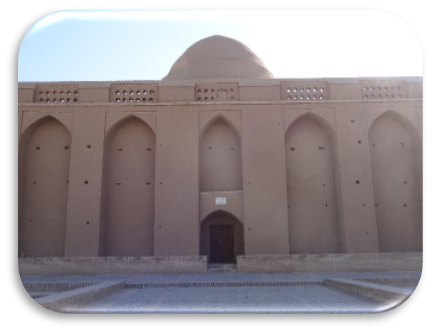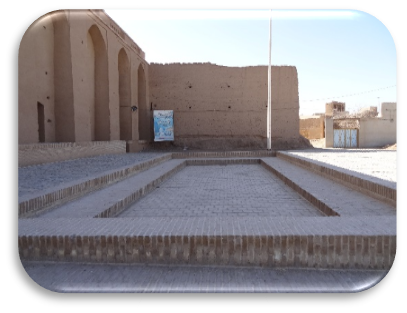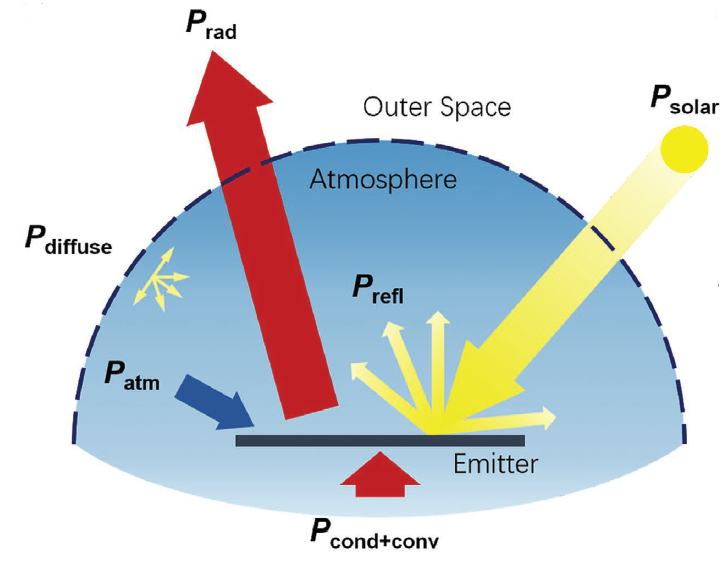During peak summer, when the daytime temperatures reach 50 oC (North India), the only thing that can get you through the day is that luscious and chilled ice cream melting slowly into your mouth while enjoying it in your cosy space underneath an air conditioner. Suddenly there is a power outage, and not only the ice cream, but our body also starts melting (sweating)! It’s a wonder how our ancestors got through summer days without ‘basic’ technologies such as refrigerators and air-conditioners!! More so, how did people even survive in the warm desert-like places (Iran, for example), let alone enjoying chilled drinks?
You would be amazed to know that Persians (Iranians) figured out the ice making process in the 17th century, almost 3500+ yrs before refrigeration technology replaced it in the 20th century. They built plaza-like ponds where the water froze during winter nights, and ice was harvested and stored before sunrise in the ice-house called Yakhchal for it to be used in the summer season. The ice formation happens through a phenomenon called night-sky radiation or radiative cooling. One can observe this process in real-time, where you take a bucket of water and keep it on the terrace during the night and see that the water temperature drops substantially when measured in the morning. The cooling happens because Earth’s atmosphere has a window (known as ‘atmospheric window’) in the IR spectral region of 8-13 μm wavelength region, which allows the thermal radiations from the terrestrial bodies (~ 300 K) to escape into the cold outer space which is at much lower temperature of around 3 K. If the atmospheric window were to be absent, our planet earth would heat up continuously through insolation (incoming solar irradiations) and life, as we know, would not exist. Every object radiates thermal radiation throughout the day via this window into the outer space, allowing the Earth to maintain its average temperature.



Persian Ice House

Concept of Radiative cooling

Passive radiative cooling below ambient air temperature under direct sunlight
Radiative cooling during nighttime was first reported in 1828 by François Arago, a French Mathematician and Physicist. He said that if a body radiates more heat than it receives from the environment, then that body cools down. But it was only after the 1970s the concept was systematically studied wherein different radiative cooling materials with high emissivity range in the atmospheric window are investigated, and cooling of 10-15 oC below the ambient conditions are achieved. However, radiative cooling during the daytime remained a tough challenge because the absorption of the solar irradiations can significantly offset the net cooling effect. For the radiative coolers to work during the daytime as well, the design of the cooler should be such that it offers extremely low solar absorptivity, in the wavelength range of 0.3 – 2.5 mm and simultaneously emit thermal radiations via the atmospheric window. It was not until 2014 Aaswath P. Raman from UCLA, USA, proposed and experimentally demonstrated a daytime radiative cooler, which consists of a multilayer photonic structure that can reflect 97% of incident solar radiation and emits strongly in the atmospheric window. The device fabricated by Raman and co-inventors can reportedly be cooled to 4.9 oC below ambient temperatures at the peak solar irradiance, achieving a net cooling power of 40 W/m2 during daytime.
This work attracted tremendous interest worldwide and has revived the radiative cooling research for daytime applications which once seemed quite difficult. Achieving cooling below ambient temperatures during the daytime is a significant scientific achievement in materials science and a milestone in engineering applications. In recent years, this field has seen rapid developments and indigenous designs of diurnal radiative coolers and can provide cooling of up to 100 W/m2during daytime.
The radiative cooling materials can find potential applications in many practical scenarios, some of which are listed below:
- Cooling of buildings: Radiative cooling technology has the potential of next-gen renewable energy technology. It can work standalone or combine with existing cooling systems by increasing their efficiency and achieving energy savings of almost double that of typical white rooftops.
- Enhanced solar cell efficiency: High operating temperatures reduce the efficiency and lifetime of solar cells. A recent report where a proposed lightweight and passive radiative cooling design can yield a 36 oC decrease in temperature (down from an elevated temperature of 110 oC) and a 31% increase in efficiency.
- Cooling textiles: This technology has enormous potential in providing personal thermal cooling where radiative cooling textiles have reportedly cooled the skin temperature by 2.7 oC more than what can be achieved by wearing the cotton textile.
- Water harvesting: It can also be applied to harvest water from the atmosphere when the cooling temperature reaches below the dew point.
A startup company, SkyCool Systems Inc. co-founded by Raman and run by a team of innovators and scientists is already aiming towards a sustainable future, by integrating radiative cooling technology with the existing heating, ventilation and air-conditioning (HVAC) systems in data centers, supermarkets and convenience store refrigeration and has provided electricity savings up to 100 kWh/day which is around $5800 in annual electricity savings. The tremendous interest in this field and at such a fast pace shows that utilization of renewable energy sources to their fullest potential can meet most of the energy demands and the dream of achieving a cleaner, healthier and sustainable future seems real.
Amit Bhardwaj
Senior Research Fellow
Group of Dr. Geetha G Nair
CeNS – Bengaluru
